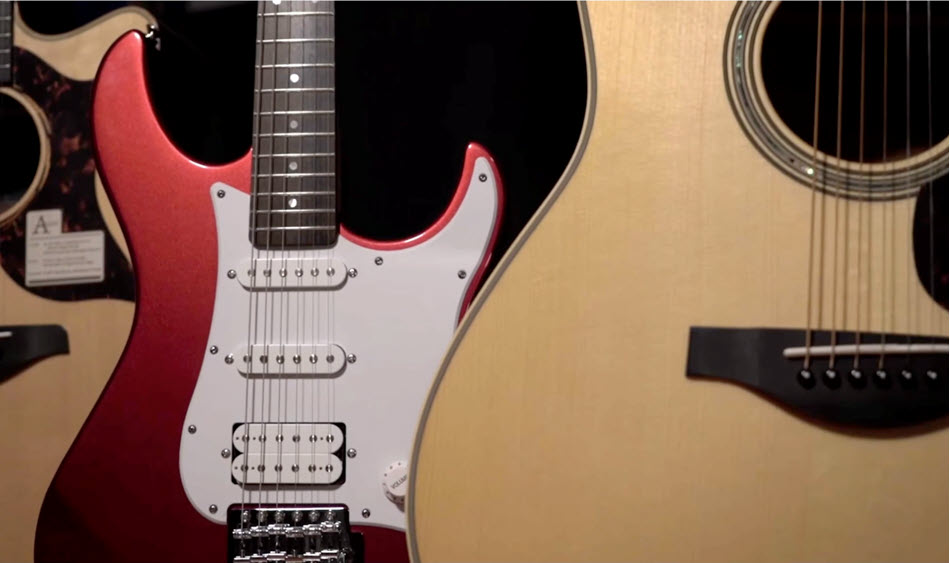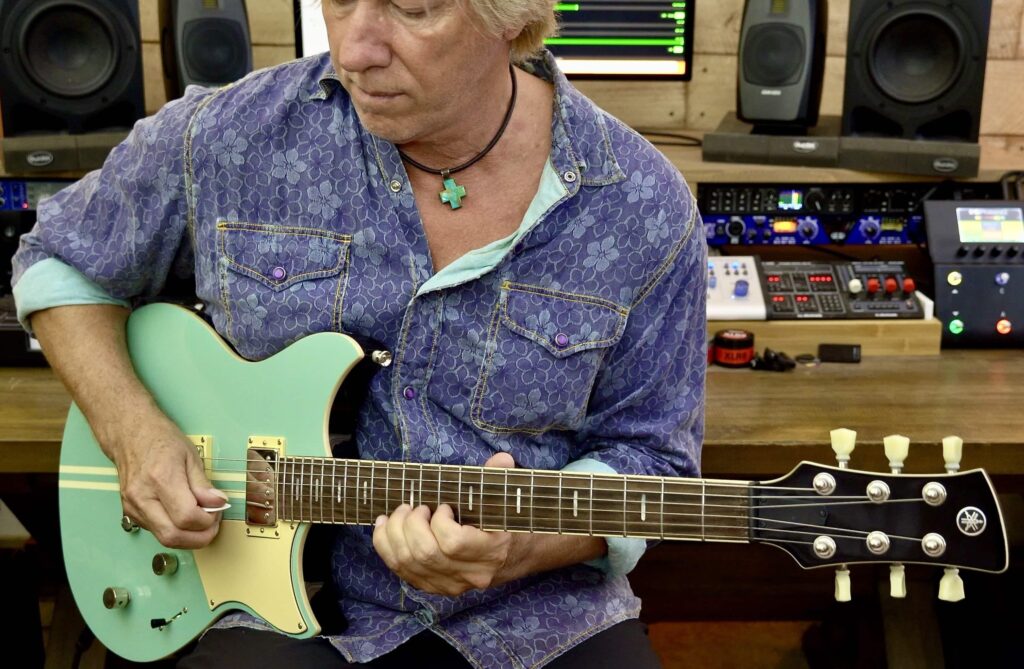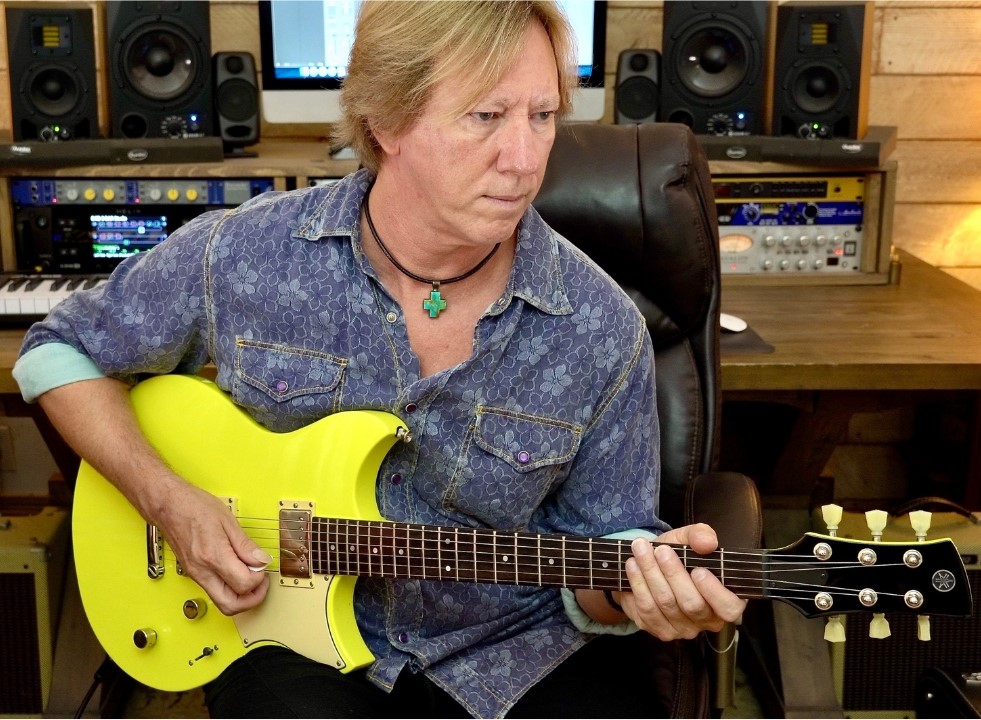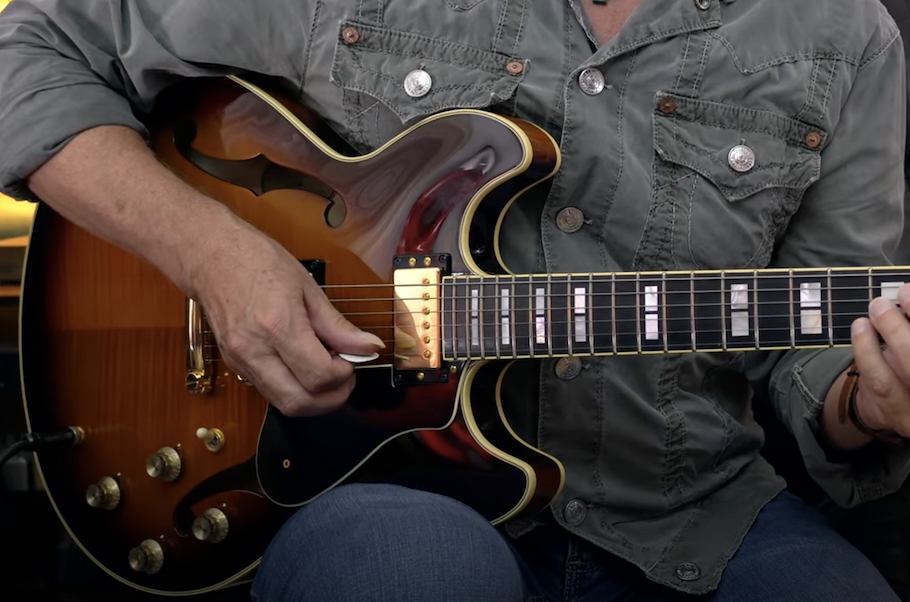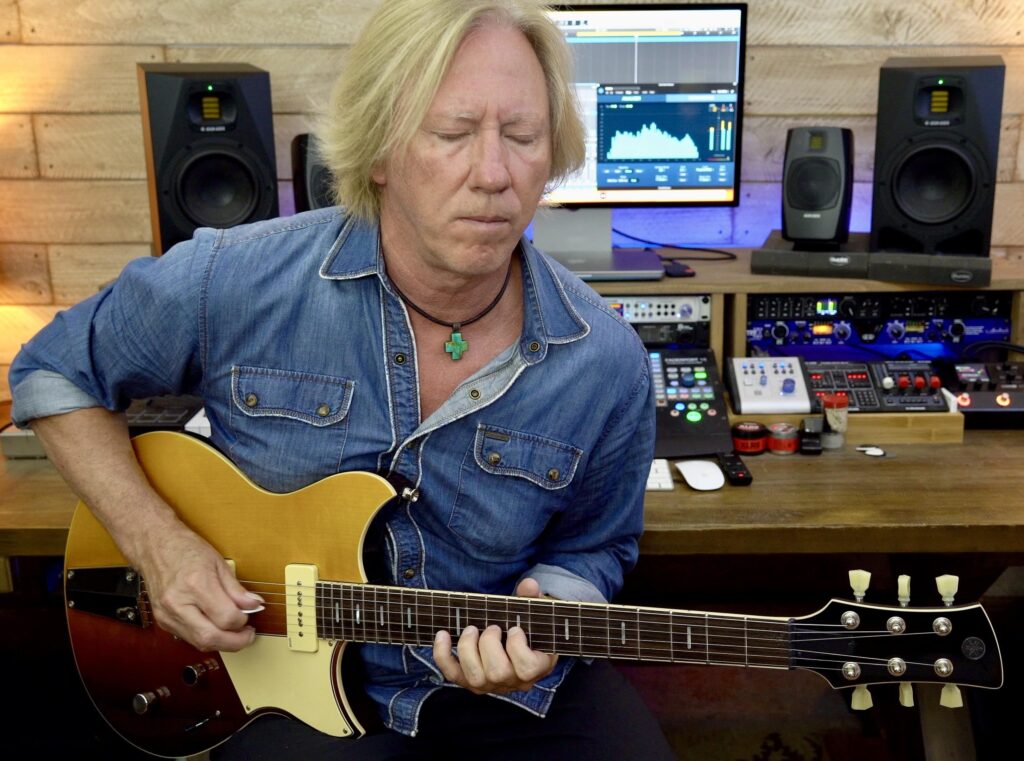Essential Guitar Maintenance
Healthy habits to adopt for your guitar.
Although guitars are inanimate, silent objects, without our physical touch, their appearance and playability may shift over time due to changes in heat, humidity, and general wear and tear. These changes may be so subtle that you don’t notice them in the short term, but you will almost certainly hear and feel them over a long period of time.
In this posting, we’ll explore some of the maintenance protocols that can be employed to keep your beloved guitar(s) sounding, looking and playing just the way you like. As a bonus, when you keep a close eye on your six-stringed counterparts, you connect with them on a higher level, but if they are not firing on all four cylinders, your playing may suffer too.
General Maintenance Tips
- Keep guitars out of direct sunlight and away from heat sources. Sunlight can fade and bleach your guitar’s finish. The direct heat may cause glue between components to soften and can also dry out the moisture content of your guitar, which may result in cracks in the wood.
- Try to maintain a constant temperature between 66 – 77° F (19 – 25° C) and ideal humidity levels between 40-50 percent. I know we can’t all have humidity-controlled rooms, but just be aware that extreme temperatures and geographical climates will affect wood instruments. (Check out this blog posting for more information.)
- Place your guitars on stands or hanging wall brackets that have a neck support and rubber retainer, as shown below. Leaning a guitar against a sofa, amp or wall can be disastrous! Keeping your instrument in eye-view will also inspire you to pick it up more often.

- Keep guitars in tune and at a concert pitch of A440Hz to maintain the correct string tension. If they are tuned too low or high, it can put unnecessary strain on the neck, bridge, and top of your guitar.
- Replace broken or rusty strings immediately and trim excess string lengths at the tuning peg with wire clippers.
- Use string cleaner, pre- and post-practice sessions or rehearsals. Cleaning strings will remove oil, sweat and acidity placed on them by your fingers. This will also prolong string life and facilitate smooth articulation.
- Regularly apply a small amount of guitar polish with a soft lint-free cloth to the back of the neck, body, top and headstock and rub gently. I always feel more inclined, and inspired, to play a nice, clean guitar.
- Re-string your guitars with a full set of new coated strings (these last a lot longer than uncoated strings) on a regular basis. Stretch the strings and tune to concert (A440Hz) pitch. How often you re-string your guitar will depend on how much you play, the type of strings you use, hand strength, pick dynamic and the makeup of your bodily secretions. (Some people destroy strings daily!)
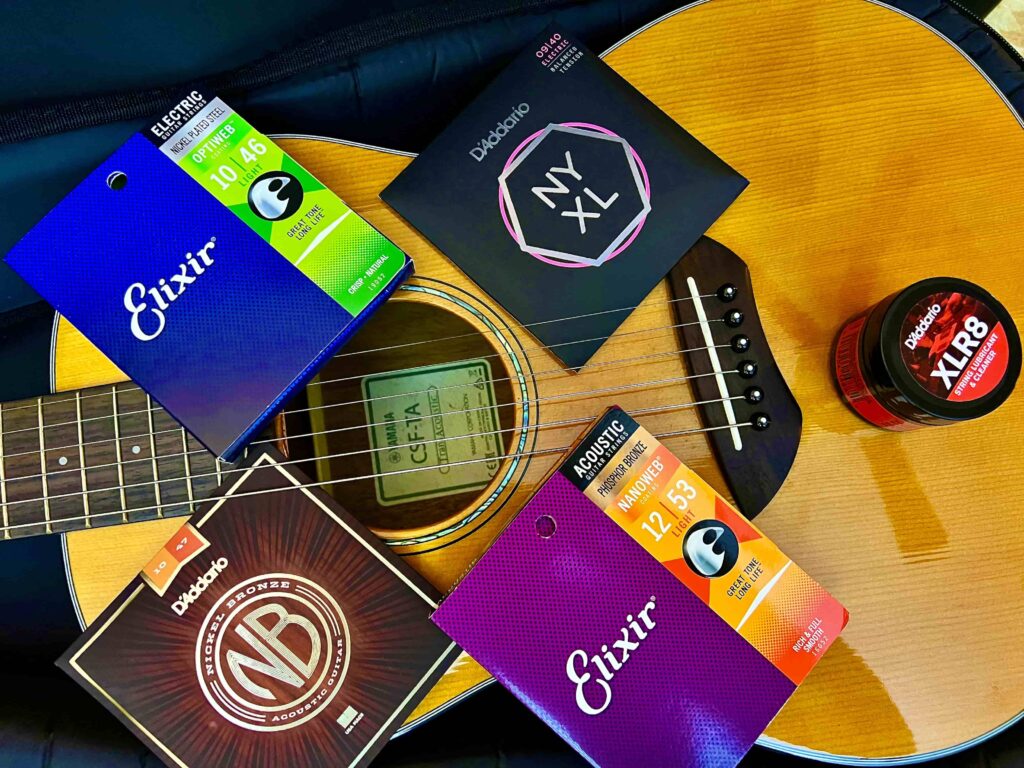
Quarterly Maintenance
- Place guitars in their cases with a Humidipak sachet for a few days to reduce, increase or maintain correct humidity levels. D’Addario manufactures three Humidipak products (Restore, Absorb and Maintain) that you can place in your guitar case or the sound hole of an acoustic guitar. Gauge your need for this based on how dry or humid your playing environment is.
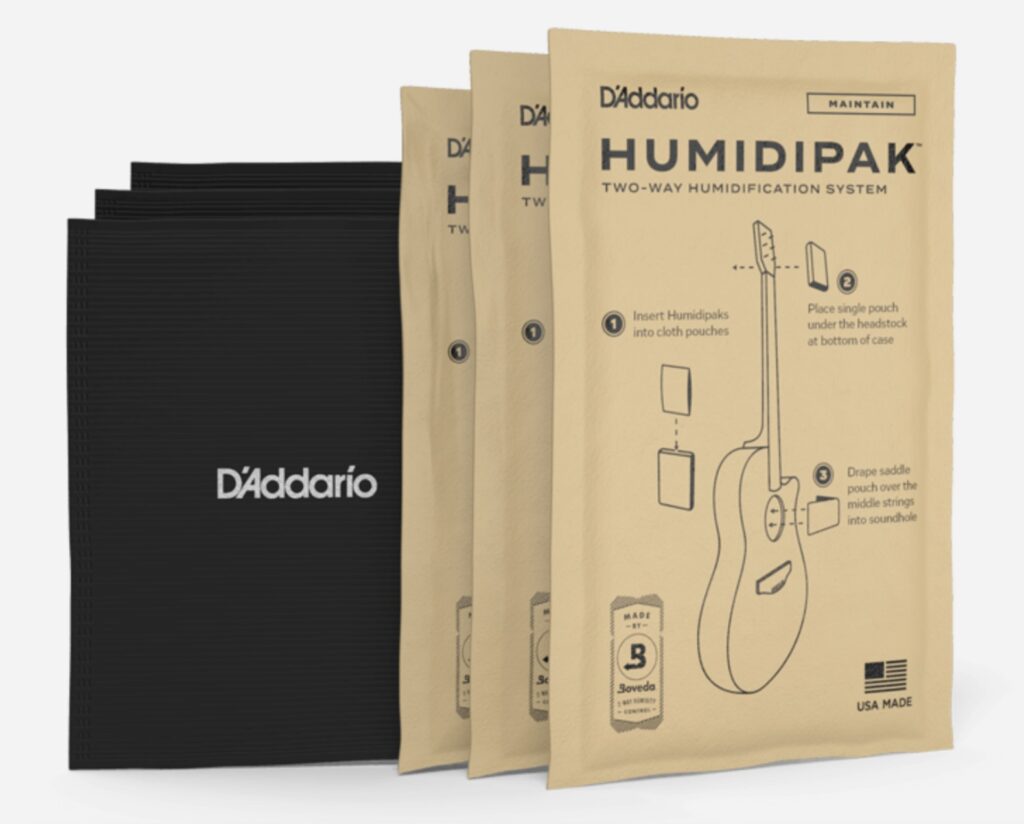

- Inspect your guitars for any cracks or disfiguration in the form of swelling on the top, back and/or sides. Guitars that are too dry may crack, split along the seams and permanently disfigure due to failing glue joints. Guitars that contain too much humidity may start to sound dull and lifeless. In addition, tonewoods may swell up due to excess moisture, causing problems between the instrument’s main components.
- Sight down the neck from the headstock and ascertain if the neck relief is within your preferred parameters. These changes can happen so gradually you don’t notice it for a while. If you work with a luthier, have them take specific measurements of your perfect setup. That way you can have them dialed back in if the playing action changes.
- Tune any guitars that you haven’t been playing regularly and check their intonation using open chord voicings, and by fretting each of the six strings at the twelfth fret (one octave higher). Neck relief will definitely affect the intonation of your strings, as can worn frets, especially in the areas of the fretboard you play in most. Using different string gauges or a worn nut and saddle can also have an adverse effect on tuning stability and overall intonation. If you are hearing tuning discrepancies, even with new strings that are in tune, have a luthier check the open string intonation and fretted notes.
Semi-Annual / Annual Maintenance
- Apply a fretboard conditioner or lemon oil to the fretboard, and let it soak in. Remove the excess conditioner or oil with a soft, lint-free cloth. Unless you have an electric guitar with a maple fingerboard, it’s highly likely your fretboard will be unfinished rosewood, ebony or other hardwood species. These close-grained hardwoods are extremely resilient to atmospherics and other contaminants like finger sweat, grease and oils, which is why they are used so often. However, a semi-annual, or annual application of a fretboard conditioner and/or string lubricant will keep your fingerboard in tip-top shape … and feel good under your fingers too.
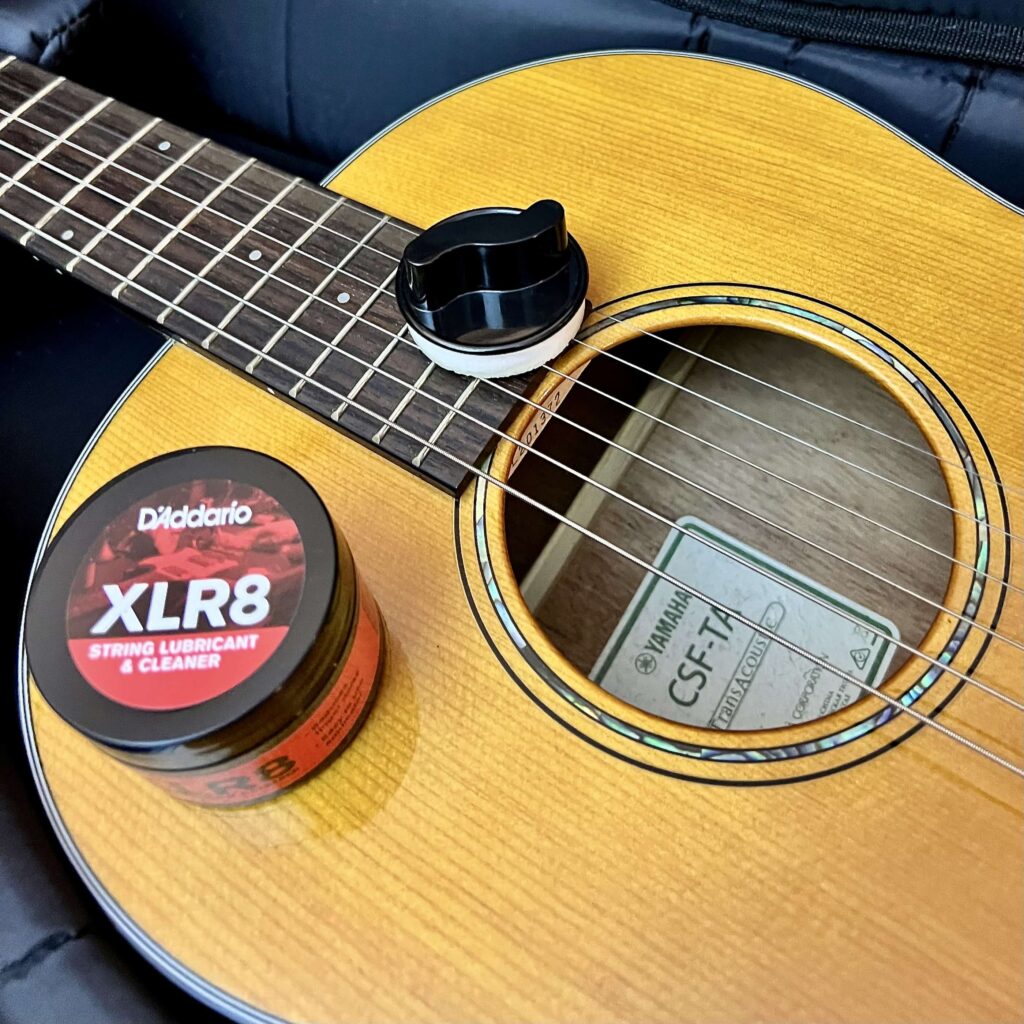
- Restring the guitar and make sure all the strings are holding their pitch. If any of the strings are getting caught in the nut or bridge, have a luthier recut the nut slots. Strings will wear down the bridge and nut slots over time, so it’s worth keeping an eye on those coupling points to maintain smooth, resistance-free movement for all six strings.
- Check the neck relief for minimal neck bow, and, if necessary carefully (and slowly!) adjust the truss rod using the Allen wrench that came supplied with your guitar. (You’ll usually find the truss rod adjuster underneath the headstock plate cover, as shown below.) Turning it clockwise reduces a concave bow; counterclockwise reduces a convex bowed neck. Go just a quarter turn at a time, and re-check until set. If you are unsure on how to adjust the neck relief, have a qualified repair shop or luthier do this for you. It’s well worth having your guitar checked once a year anyway.
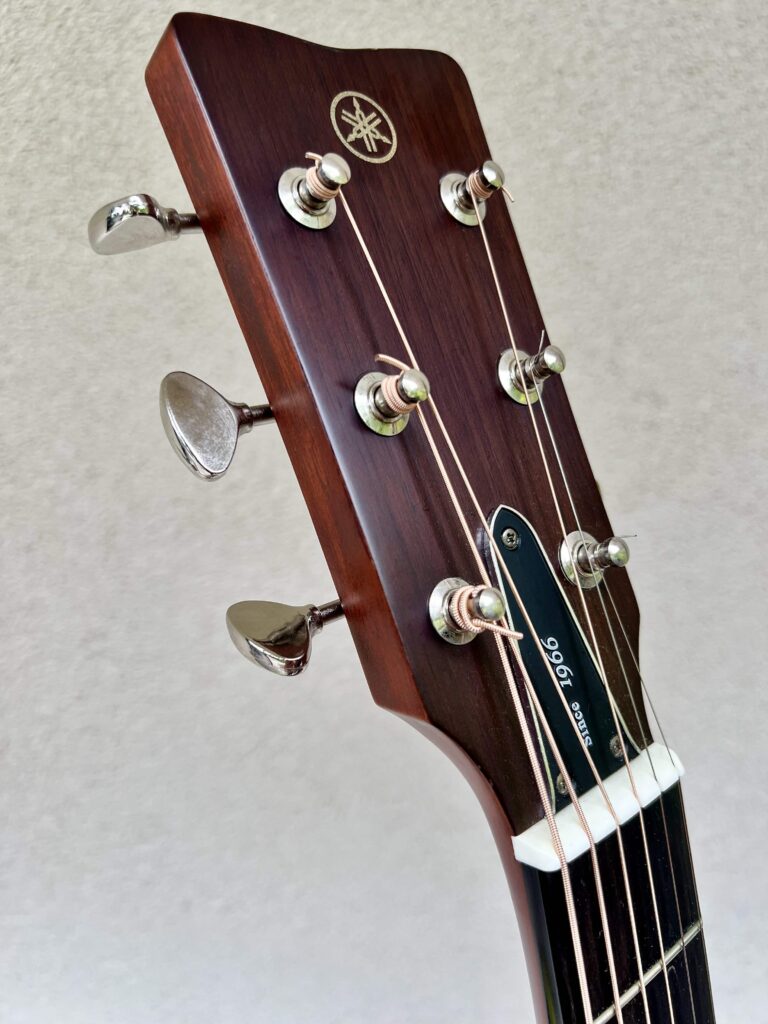
The Video
This video features the Yamaha FSX3 Red Label acoustic guitar, played through the company’s innovative THR30IIA desktop amplifier, designed especially for acoustic guitars. Maintaining your guitar as described above will allow you to articulate the arpeggios, chord spreads and the nice clean slide guitar parts I play in the video. Note that the complex finger moves further up the fretboard could also run the risk of intonation problems if the strings are old or rusty. In addition, all the parts become harder to play if the action is set too high at the nut or bridge, or if the guitar has an exaggerated neck relief.
The Guitar
The Yamaha FSX3 is a concert body-sized acoustic guitar that sports a mahogany back and sides, along with a solid spruce top. When I initially received this guitar, I had it set up to my exacting specifications, substituting a slightly lighter set of strings than those that come standard with the instrument.
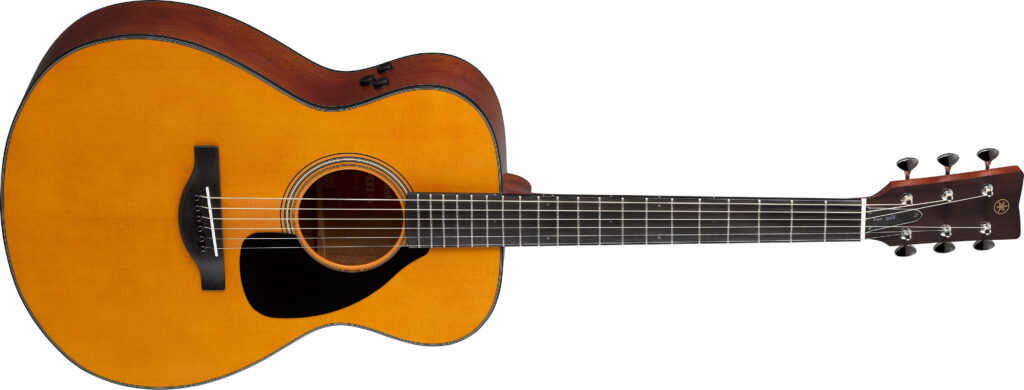
My FSX3’s playability has remained constant since that setup, which I think is partly due to the solid tonewoods used in the instrument, along with regular string changes and humidity maintenance.
The Wrap-Up
Modern instruments have usually undergone rigorous quality-control checks before they leave the manufacturer, and may undergo even further adjustments at the guitar store before you purchase it. But regardless of those initial setups, personal alterations may still need to be made to get your guitar playing just the way you like.
It’s definitely worth taking the time to assess and do some routine maintenance of each of your guitars on a regular basis. A well-maintained instrument will last a lifetime, or at the very least will protect your investment for years of playing pleasure.
PHOTOGRAPHS COURTESY OF THE AUTHOR.










